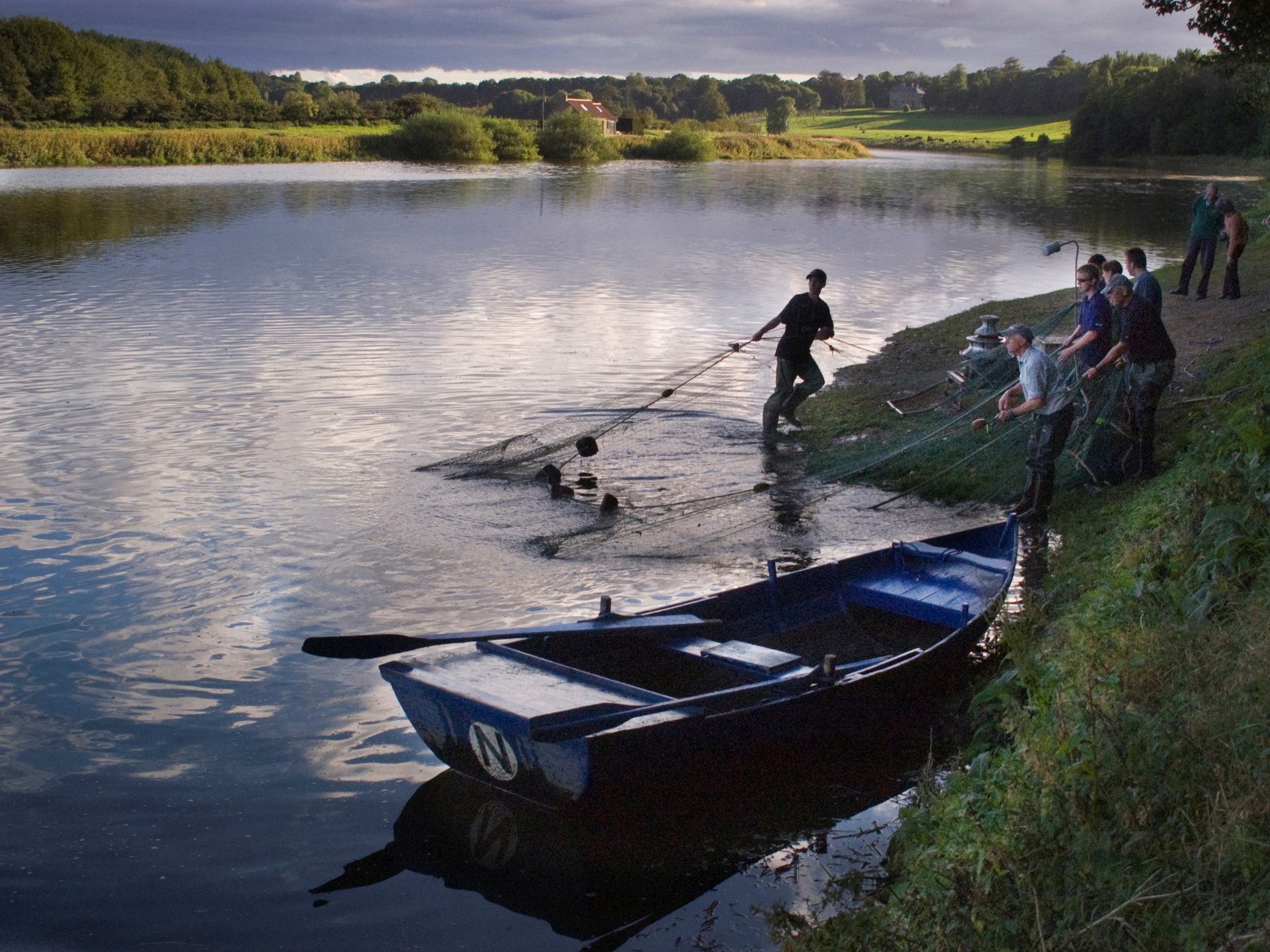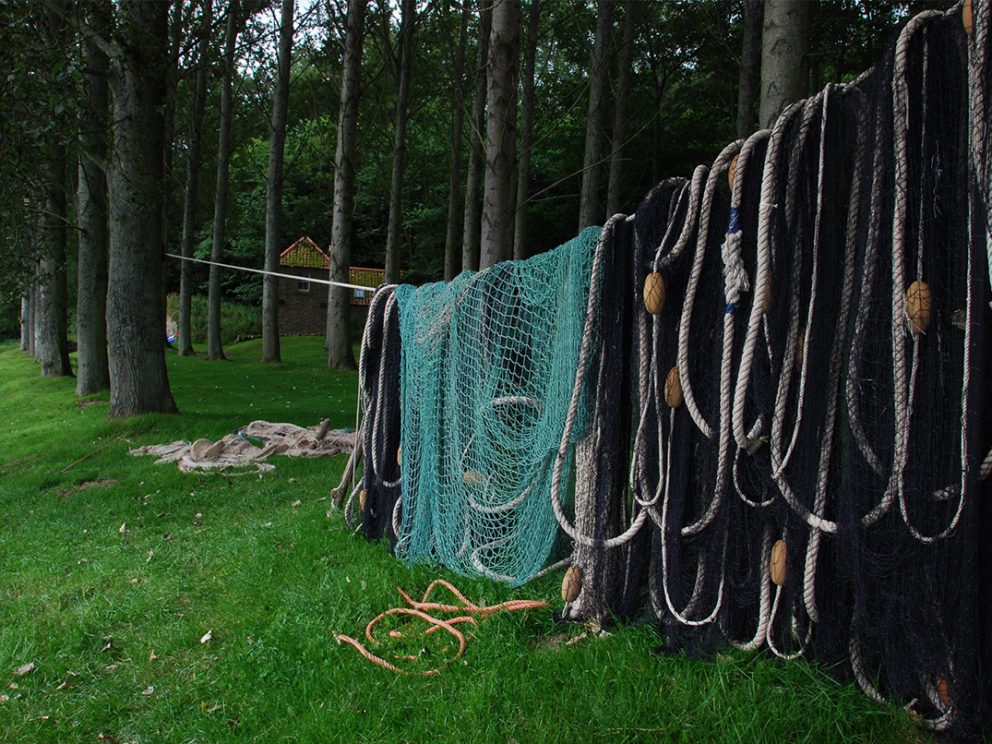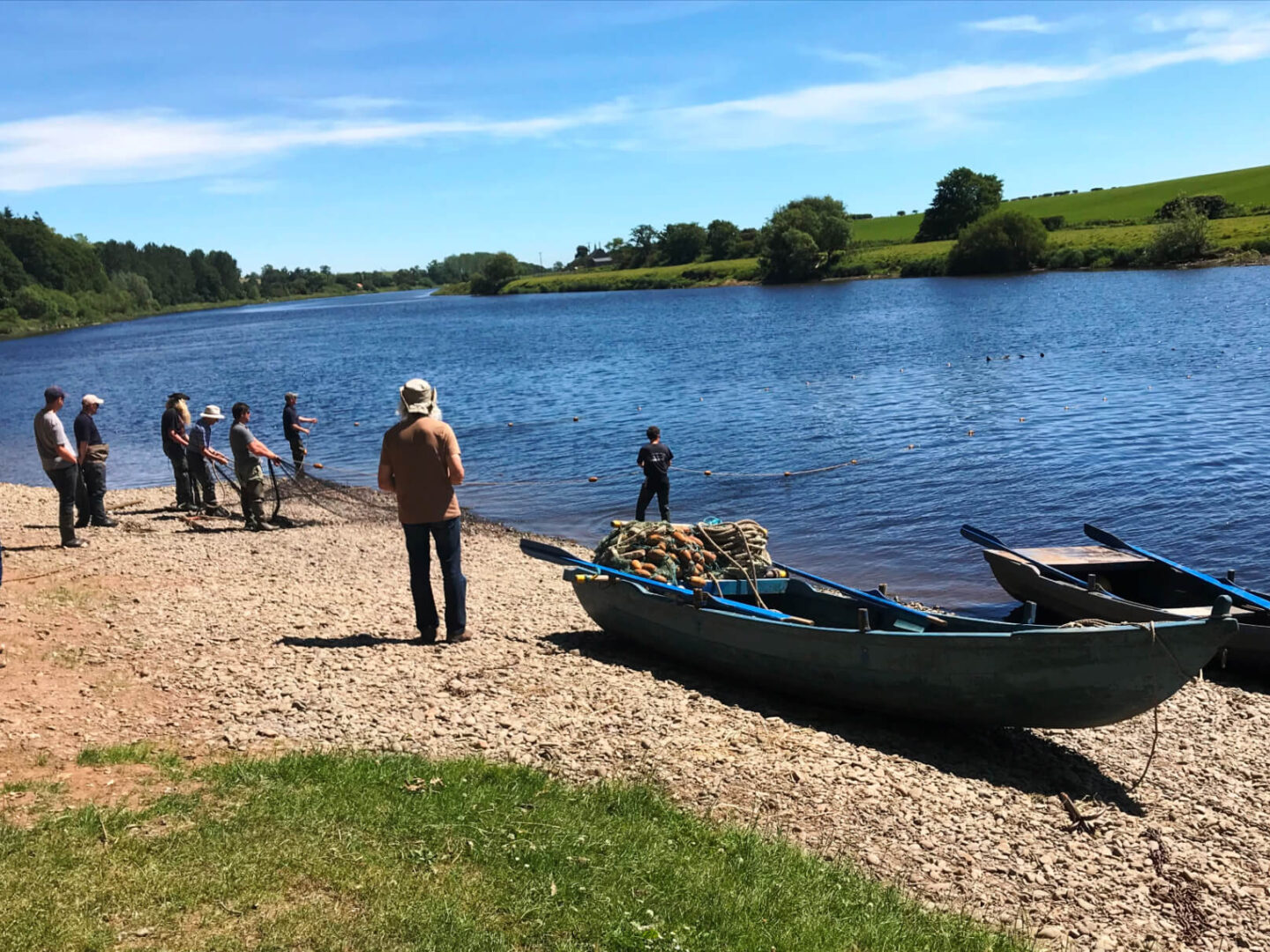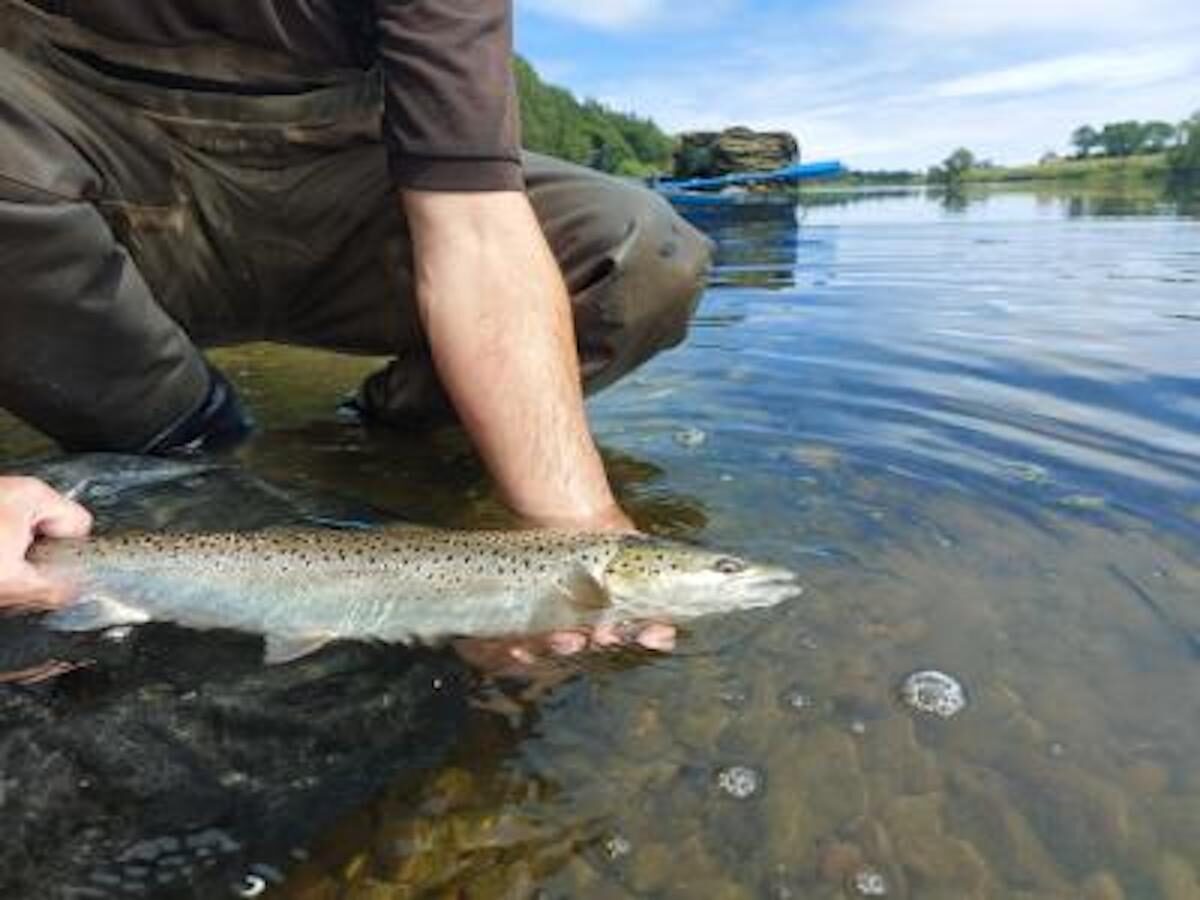Paxton Fishery
The river Tweed is the most productive salmon river in the UK with some of the highest populations of Atlantic salmon and sea trout in the country. At Paxton House, the River Tweed Commission run a specialist netting station which monitors the health and size of the fishery.
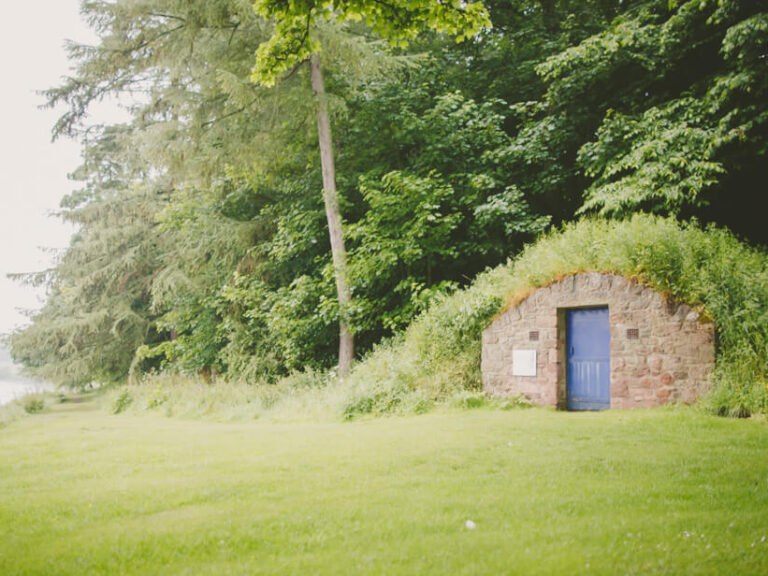
Icehouses
Hidden in the riverbank beside the Tweed is the Victorian icehouse. in the past, salmon were stored in ice, fresh from the river, before being transported to Berwick-upon-Tweed for sale and distribution. Ice was collected from shallow places on the River Tweed and from specially flooded pools during the winter. Fresh fish on ice commanded a higher price than the pickled or salt fish sold a century earlier.
Paxton House’s own domestic ice house is hidden under the arches of the bridge. It was built a century earlier as a way of preserving food for the house and making fashionable summer desserts.
